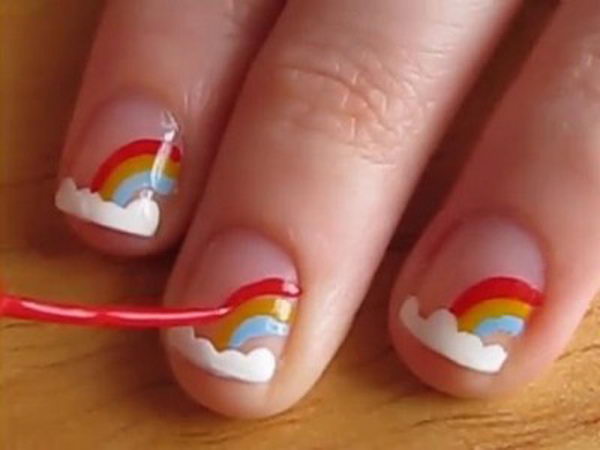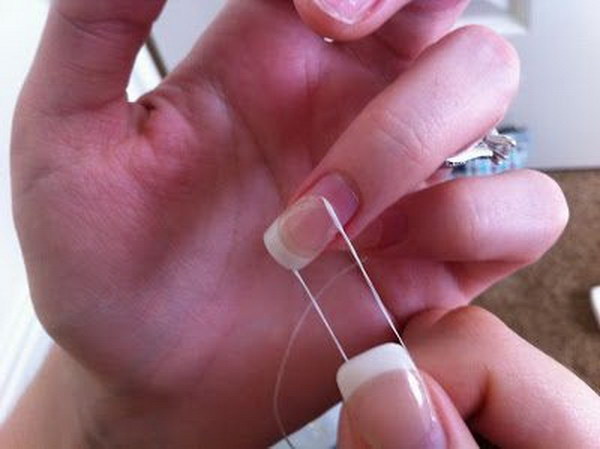Table of Content
This first stage is crucial to efficient removal. Grab your nail file — Humphrey recommends a 180 grit to get the job done — and begin filing off the top coat of your gels, making sure to remove all of the shine. This breaks the gel seal so that the acetone can get to work breaking down the cured paint.

Acetone can damage sinks, countertops, and furniture. To protect your work area, line it with plastic wrap. Practice Safe Sun Everyone's at risk for skin cancer. These dermatologists' tips tell you how to protect your skin. Despite the misconception that LED lamps are safer than UV lamps, ultraviolet A light is emitted by both types of lamps.
Steps for At-Home Gel Polish Removal
On average, a hard gel manicure costs between $80 and $125. At the salon, they clip off the tip, file off the color with a coarse safety bit, and then you wash your hands. After all that, "you should have your natural nails back," Inzerillo says. In my case, the technician applied the hard gel manicure just to the base of the nail — no extensions required.

In the early 1920s, chemists developed what we think of today as nail polish. Use the emory board to gently scrape the gel polish off. Saturating a cotton ball with too much acetone can cause mild irritation to the skin, causing the skin to become red, dry or cracked. Improper removal can definitely cause nail damage, ouch! Have that hot towel at the ready; wrap the towel around your hands as they soak to speed up removal. The first thing that you are gonna need to do is file away the top coat of your gel polish.
Introduction: How to Remove Gel Polish at Home
And in my opinion, they are terrible for the health of your nails, worse than acetone. But prolonged exposure to acetone can be very damaging to your natural nails. You see acetone is a very strong chemical and will severely dehydrate both your nails and skin. Emily is a longtime makeup and skincare enthusiast with a passion for all things natural and organic. Ever since she started writing, she made it a goal to share with others all about the best beauty merchandise available. She loves researching new makeup, discovering unique products, and seeking out the top items found in the cosmetics world.

To make the process even faster, we recommend placing your small dish of acetone into a bigger bowl with warm water. Warming up the acetone will allow it to penetrate the product faster and make your removal process much easier. Apply cuticle oil as frequently as three times a day daily if you feel it’s worth keeping your nails and skin in perfect shape.
Best Natural Hair Dyes for Toxic-Free Color
You can also buy an at-home gel removal kit to make things easier. I would like to stress that at the end of the day, this is one nail tech's opinion of how to safely remove your gel nail polish. Finding a nail tech you trust is not easy, so if you have one then cherish them. There are nail pros out there who can safely remove your gels otherwise, but if you notice any type of damage from gels it’s likely that the removal process is to blame. To remove gel nail polish without acetone you will need water, a cuticle stick, a buffer, moisturizer and cuticle oil. If you’ve ever gotten your gel manicure removed at the salon, you probably noticed they file down your nails before starting the removal process.
If you’re a beginner, using a drill to grind off gel nail polish is not recommended since you may risk grinding past the gel polish coat and into your nail plate. When removing gel nail polish, it is easier to work on one hand at a time. You see it can be safer because filing physically removes the gel polish from your nail plate which allows you to be in control. This is unlike using acetone which chemically dissolves the gel polish and at the same time affects your nails and skin too.
How to Do Progressive Muscle Relaxation: 8 Tips for Beginners
Once done, get buffing; moving the file on your nails to get rid of the top coat and to see your bare nails, gel polish-less. Wondering what is today’s modern beauty mainstay, well it has to be the literal unhinged and non-chipping market fav; gel polish. Once a niche service reserved for the affluent, this nail polish is now affordable and available to one and all.

Gently rub petroleum jelly into your cuticles and the skin around your nails every day for seven days. This will help to reduce any irritation caused by the acetone. Wash your hands or feet with a gentle soap and water to remove the acetone. If you have a fragrance-free soap, use it. Any mild soap will help you avoid irritating your skin.
Luckily, I realized that acetone nail polish remover DOES actually remove gel polish – whew! Acetone polish quickly breaks down the gel, but it can wreak havoc on your natural nails so it’s important to use extra care when applying such a harsh chemical. Douse cotton balls in 100 percent acetone and place one on each nail.

Apply a thin layer of petroleum jelly to each cuticle and the surrounding skin. This will help protect your skin from the acetone. A dermatologist is a medical doctor who specializes in treating the skin, hair, and nails. Dermatologists care for people of all ages. Use a cuticle stick to scrape off any remaining adhesive or polish.
Place the acetone-soaked cotton on top of a fingernail and move on to the next step. Take a cuticle stick and gently push the remaining gel residue off of each nail, working from the cuticle area towards the free edge. If you’re nails are getting too long, growing unevenly or if you notice a snag on one of them, make sure to file them down. This prevents further chipping, splitting and tearing, which will not only wreck your manicure, but also damage your nails. This method will only work when your gel manicure is already peeling this only happens when it is very old and worn out.

Stick to Tuttle's step-by-step tips for easy, safe gel removal. First, place cotton balls in acetone for a good soak. As they absorb the remover, file the surface of your nails (just a bit!) to break the top coat seal. Then, place the acetone-soaked cotton balls on the surface of each nail; wrap each cotton ball-topped finger with tin foil. And then you wait patiently—you want to give the acetone 10 to 15 minutes for the gels to become saturated and lift off entirely. "I recommend removal while you're FaceTiming a friend or watching TV, so you're not tempted to damage your nails by rushing. No harsh removal or picking, please!" says Tuttle.
Soaking method
Keep in mind, buffing your nails too much can thin the nail plate, weakening your nails and the gel polish's ability to adhere. This happens when overly buffed nails bend too much, causing the gel polish to separate easily from the nail plate. After wrapping each nail, wait 10 minutes to let the acetone soak into the gel polish. "Saturate a square of cotton in acetone, place it on the nail and then wrap the foil around as tightly as possible," Humphrey explains. In most instances, I don’t recommend using this method unless you are truly in a hurry.

No comments:
Post a Comment